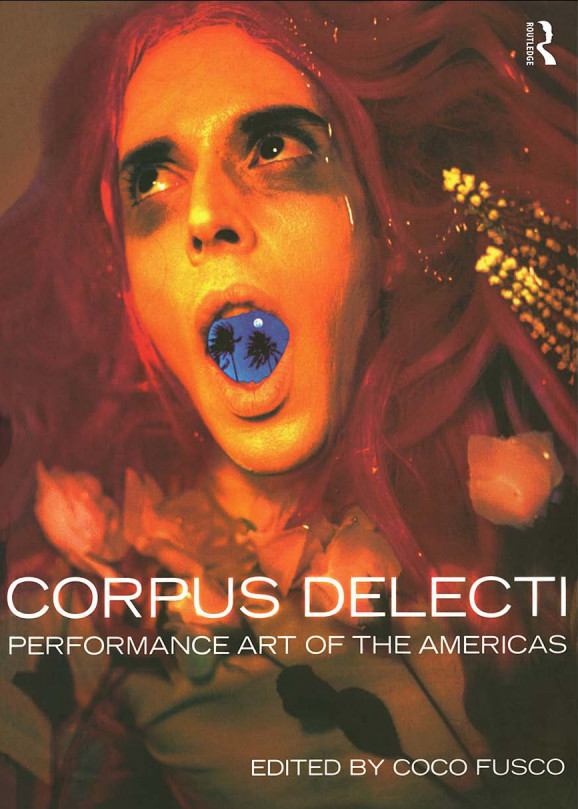Robert O. Becker, Gary Selden: The Body Electric: Electromagnetism and the Foundation of Life (1985)
Filed under book | Tags: · body, electric field, electromagnetism, neurons

An orthopedic surgeon’s controversial experiments and case studies involving his bioelectric theory show how the human body’s need for electricity offers almost limitless possibilities for medical treatment.
Publisher Morrow, 1985
ISBN 0688001238, 9780688001230
364 pages
PDF (no OCR; updated on 2012-7-18)
Comment (0)Coco Fusco (ed.): Corpus Delecti: Performance Art of the Americas (2000)
Filed under book | Tags: · art history, body, latin america, performance, performance art, theatre

“Corpus Delecti is a unique collection of historical and critical studies of contemporary Latin performance. Drawing on live art from the 1960s to the present day, these fascinating essays explore the impact of Latin American politics, popular culture and syncretic religions on Latin performance.
Including contributions by artists as well as scholars, Fusco’s collection bridges the theory/practice divide and discusses a wide variety of genres. Among them are body art, carpa, vaudeville, staged political protest, tropicalist musical comedies, contemporary Venezuelan performance art, the Chicano Art movement, and queer Latino performance.
The essays demonstrate how specific social and historical contexts have shaped Latin American performance. They also show how those factors have affected the choices artists make, and how their work draw upon and respond to their environment.”
Publisher Routledge, 2000
ISBN 0415194547, 9780415194549
307 pages
Reviews: Lisa Wolford (Modern Drama, 2000), Ramon H. Rivera-Servera (Theatre J, 2001).
PDF (updated on 2013-1-29)
Comment (0)Donna J Haraway: Simians, Cyborgs, and Women: The Reinvention of Nature (1991–) [EN, ES]
Filed under book | Tags: · animal, body, capitalism, culture, cyberfeminism, cyborg, feminism, gender, nature

“The idea that nature is constructed, not discovered – that truth is made, not found – is the keynote of recent scholarship in the history of science. Tracing the gendered roots of science in culture, Donna Haraway’s writings about scientific research on monkeys and apes is arguably the finest scholarship in this tradition. She has carefully studied the publications, the papers, the correspondence, and the history of the expeditions and institions of primate studies, uncovering the historical construction of the pedigrees for existing social relations – the naturalization of race, sex, and class. Throughout this book she is analysing accounts, narratives, and stories of the creation of nature, living organisms, and cyborgs (cybernetic organisms: systems which embrace organic and technological components). She also looks critically at the immune system as an information system, and shows how deeply our cultural assumptions penetrate into allegedly value-neutral medical research. In several of these essays she explores and develops the contested terms of reference of existing feminist scholarship; and by mapping the fate of two potent and ambiguous worlds – ‘nature’ and ‘experience’ – she uncovers new visions and provides the possibility of a new politics of hope.
Her previous book, Primate Visions, has been called ‘outstanding’, ‘original’, ‘brilliant’, ‘important’ by leading scholars in the field. Simians, Cyborgs, and Women contains ten essays written between 1978 and 1989. They establish her as one of the most thoughtful and challenging feminist writers today.”
Publisher Routledge, New York, 1991
ISBN 1853431397, 9781853431395
287 pages
Simians, Cyborgs, and Women: The Reinvention of Nature (English, 1991, updated on 2012-7-31)
Ciencia, cyborgs y mujeres. La reinvención de la naturaleza (Spanish, trans. Manuel Talens, 1995, added on 2014-3-18)

